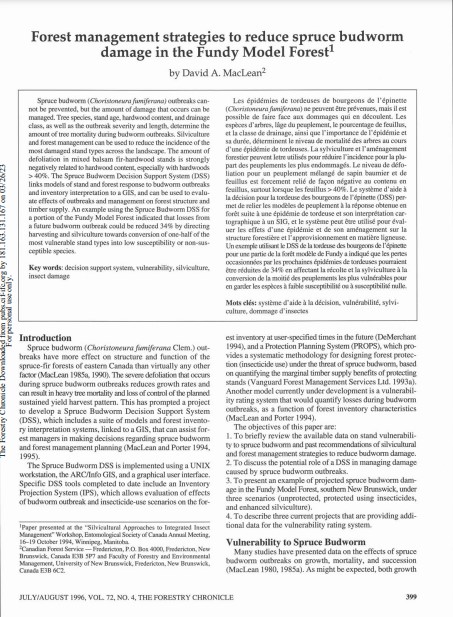Forest Management Strategies to Reduce Spruce Budworm Damage in the Fundy Model Forest
Bosque Modelo:
Fundy
Temática:
Gestión forestal
Tipo de documento:
Artículo científico
Resumen
Spruce budworm (Choristoneura fumiferana) outbreaks cannot be prevented, but the amount of damage that occurs can be managed. Tree species, stand age, hardwood content, and drainage class, as well as the outbreak severity and length, determine the amount of tree mortality during budworm outbreaks. Silviculture and forest management can be used to reduce the incidence of the most damaged stand types across the landscape. The amount of defoliation in mixed balsam fir-hardwood stands is strongly negatively related to hardwood content, especially with hardwoods > 40%. The Spruce Budworm Decision Support System (DSS) links models of stand and forest response to budworm outbreaks and inventory interpretation to a GIS, and can be used to evaluate effects of outbreaks and management on forest structure and timber supply. An example using the Spruce Budworm DSS for a portion of the Fundy Model Forest indicated that losses from a future budworm outbreak could be reduced 34% by directing harvesting and silviculture towards conversion of one-half of the most vulnerable stand types into low susceptibility or non-susceptible species.
Información Bibliográfica
Autor:
MacLean, DA.
Revista:
Forestry Chronicle
Año:
1996
N°:
4
País :
Canadá
Páginas:
399 - 405
Volumen:
72
Idioma:
Ingles
Palabras claves
decision support system, vulnerability, silviculture, insect damage





